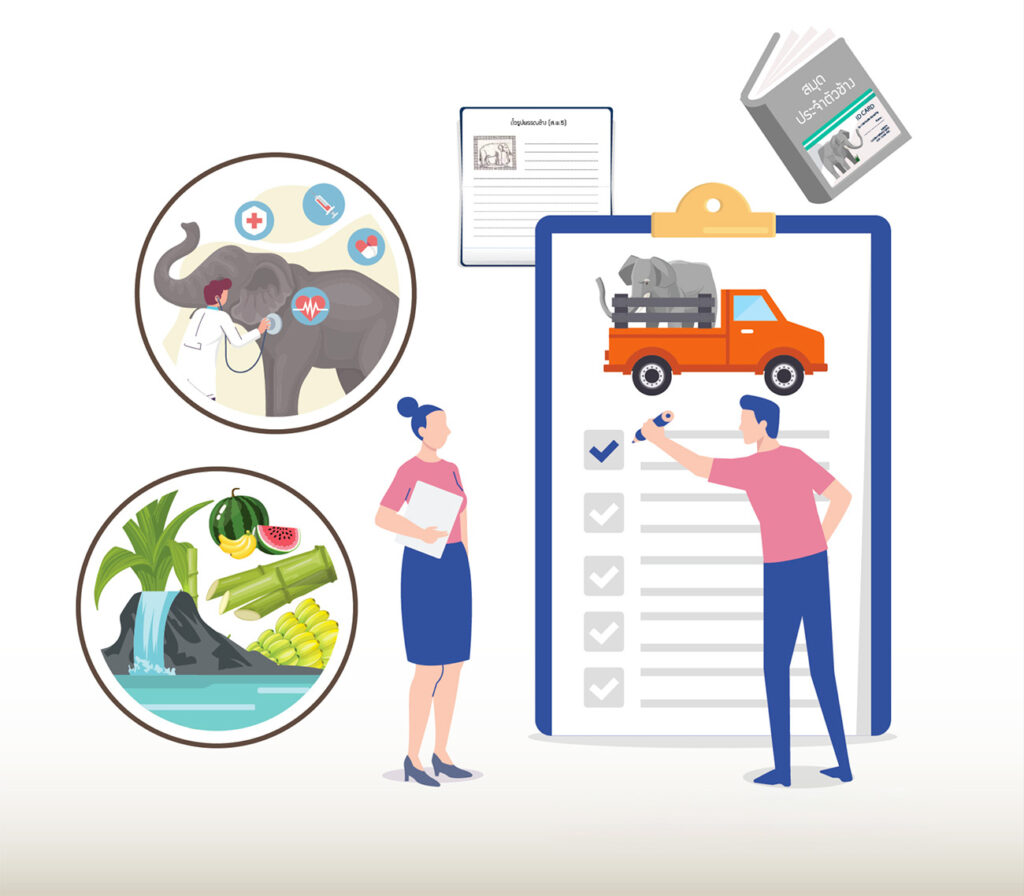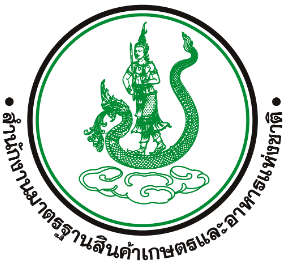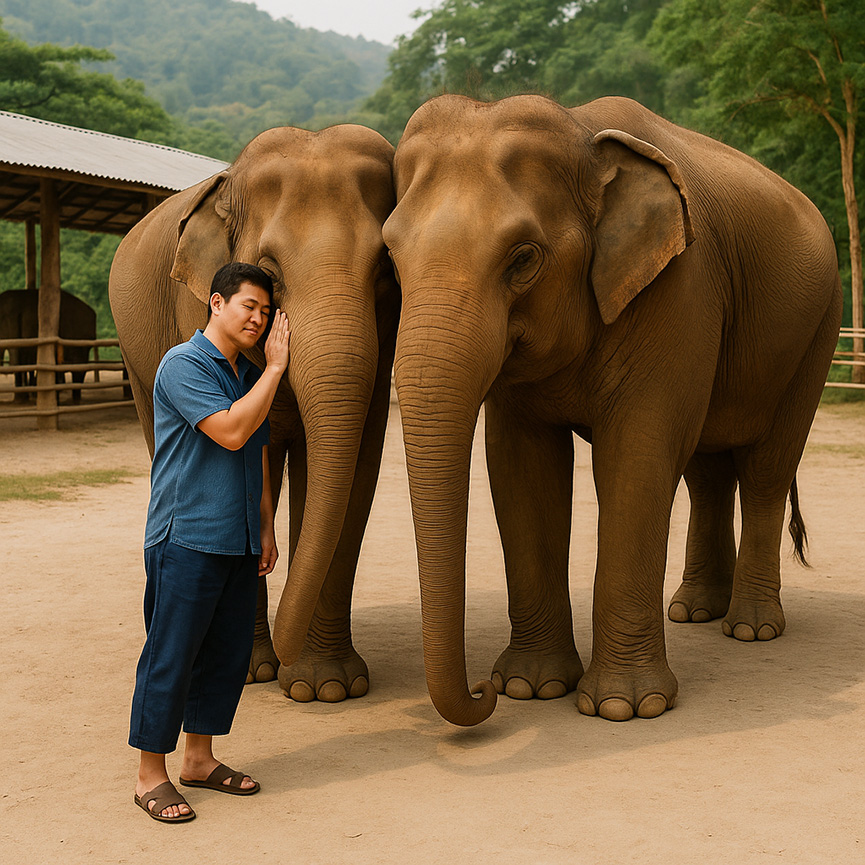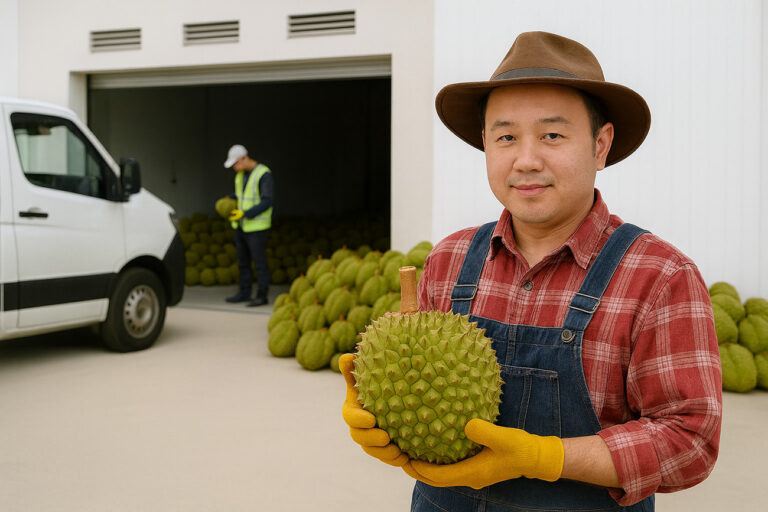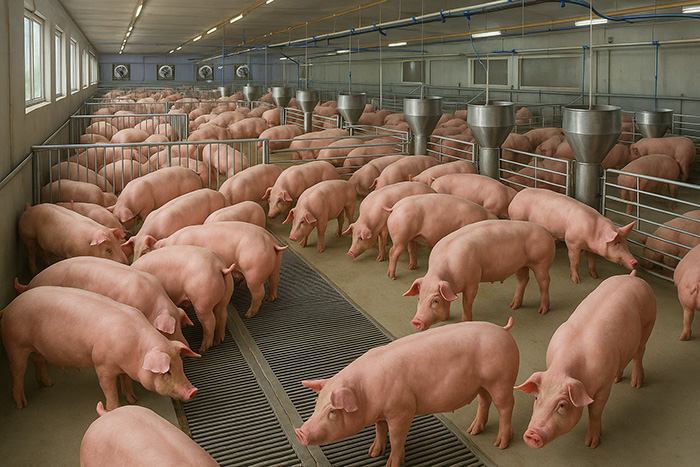Introduction
There are a number of elephant camps operating in Thailand as service businesses, such as providing elephant shows or elephant-related tourism activities. However, most elephant camps still lack adequate knowledge and understanding of proper good practices in management, supervision, and elephant care. This has resulted in problems concerning elephant health, elephant abuse, as well as environmental issues caused by elephant dung and solid waste. Therefore, in order to improve the practices in management, supervision, and elephant care in a proper and appropriate manner, in compliance with animal welfare principles, and to upgrade the standards of Thai elephant camps, the Agricultural Standards Committee deems it necessary to establish the Thai Agricultural Standard on Good Animal Practices for Elephant Facility.
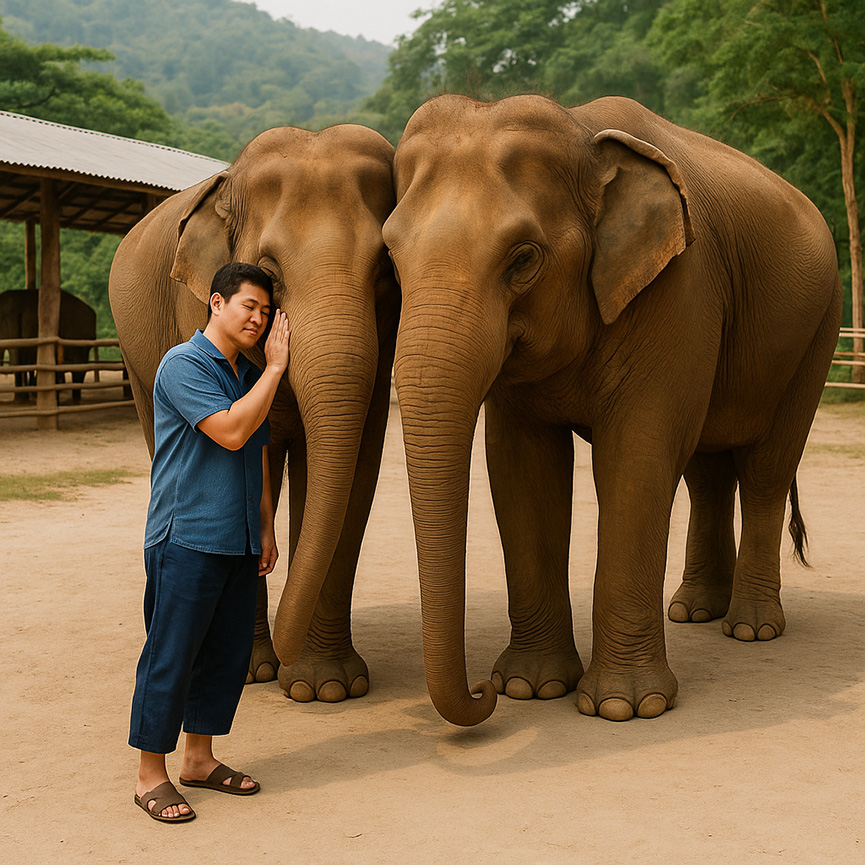
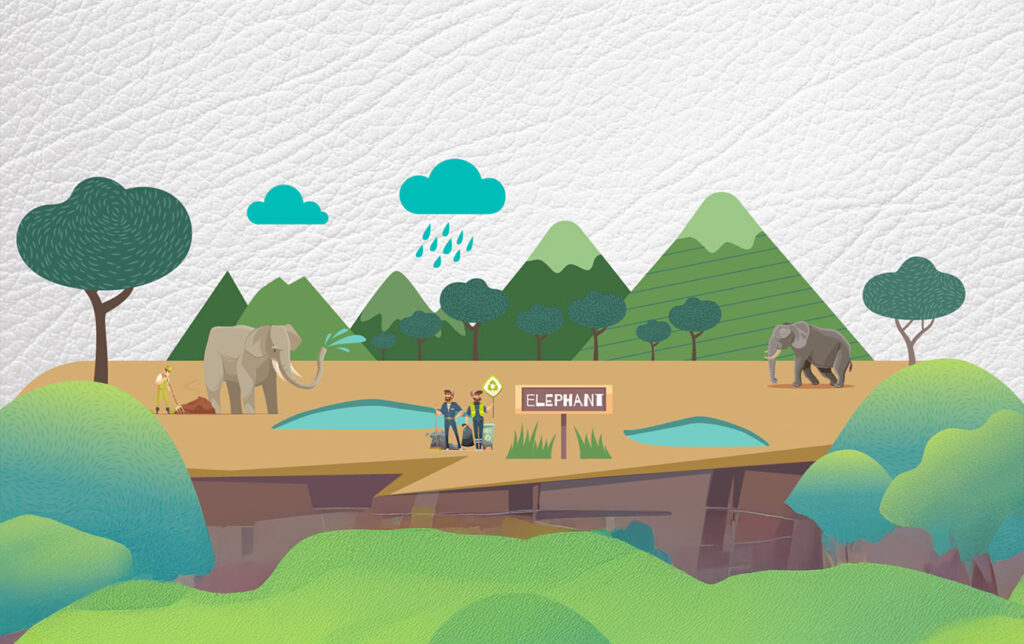
Objective
The objective is to promote the quality and standards of elephant care in accordance with animal welfare principles, prevent elephant cruelty, and elevate the management of elephants in camps to a certifiable standard.
Scope
This Thai Agricultural Standard establishes good animal practices for elephant facilities as defined herein. ‘Elephant facility’ means a place where elephants are raised or gathered for tourism, shows, or other businesses that seek benefits from elephants, whether or not admission or service fees are charged, either directly or indirectly. It covers components of elephant facilities, management of elephant facilities, personnel, elephant health, animal welfare, environment, safety management, and record keeping, in order to ensure that elephants are in good health, taking into consideration animal welfare, the environment, as well as the health, safety, and welfare of personnel, and the safety of visitors.
This Thai Agricultural Standard applies only to elephant facilities that raise or gather domesticated elephants of the scientific name Elephas maximus.
This Thai Agricultural Standard does not cover
Home own raising with no elephant-related business in tourism or shows.
Raising for labour purposes, e.g. logging.
Key Elements of Good Animal Practices for Elephant Facility
Summary of Thai Agricultural Standard TAS 6413-2021 "Good Animal Practices for Elephant Facility"
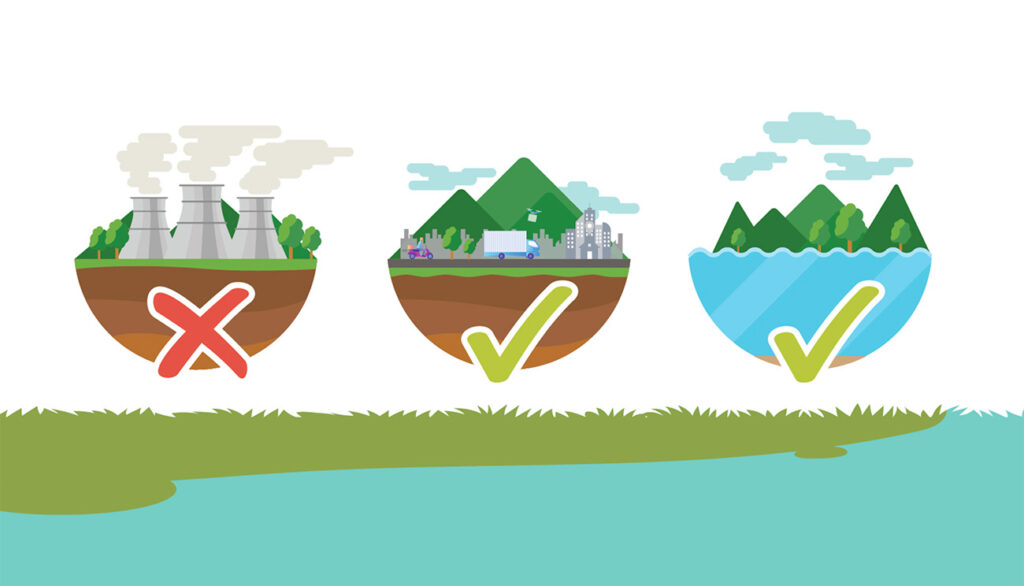
Requirements of Good Animal Practices for Elephant Facility (TAS 6413-2021)
1. Components of an Elephant Facility/Camp
1.1 Location
- Elephant facility/camp shall be located in an area where the environment causes no risk of contamination of physical, chemical and biological hazards which may be harmful to animal health and welfare. Otherwise, preventive measures shall be in place.
- Elephant facility/camp shall be located in an area where sufficient clean water shall be available throughout the year.
- Transportation route to the elephant facility/camp shall be available for transportation of elephants and delivery of food, medical supply and equipment.
- The area of elephant facility/camp shall not cause any environmental impact to watershed forests.
1.2 Size and Layout of Elephant Facility/Camp
- Area of an elephant facility/camp shall match with types of activities and number of elephants.
- Layout of an elephant facility/camp shall be designed to facilitate hygienic practices.
- Operation areas shall be laid out separately, e.g. areas for holding, resting, food storage, tools and equipment storage, and area for garbage and elephant dung disposal.
1.3 Elephant Holding and Resting Areas
- Holding area shall be in place for elephants before and after services.
- Elephant house Sufficient space for raising elephants shall be provided, taking into consideration animal welfare principles. The structure shall be soundly built, covered with a roof to protect elephants from sun and rain, with good ventilation, and the floor shall not be waterlogged.
- In case of no-housing Shade and adequate water supply shall be taken into consideration when selecting an elephant holding area.
- Resting area shall be in place for elephants during off-service periods or nighttime, for example
- Elephants chained Elephants chained in a natural or a plantation forest, or in an open area using strong anchoring point, under the trees, or in a building. In all cases, a space provided for each elephant shall not be less than 16 m². The length of ropes or chains shall not be less than 1.5 m.
- Elephants roaming freely in an enclosure by taking into consideration shade, sufficient water supply as well as elephants’ safety.
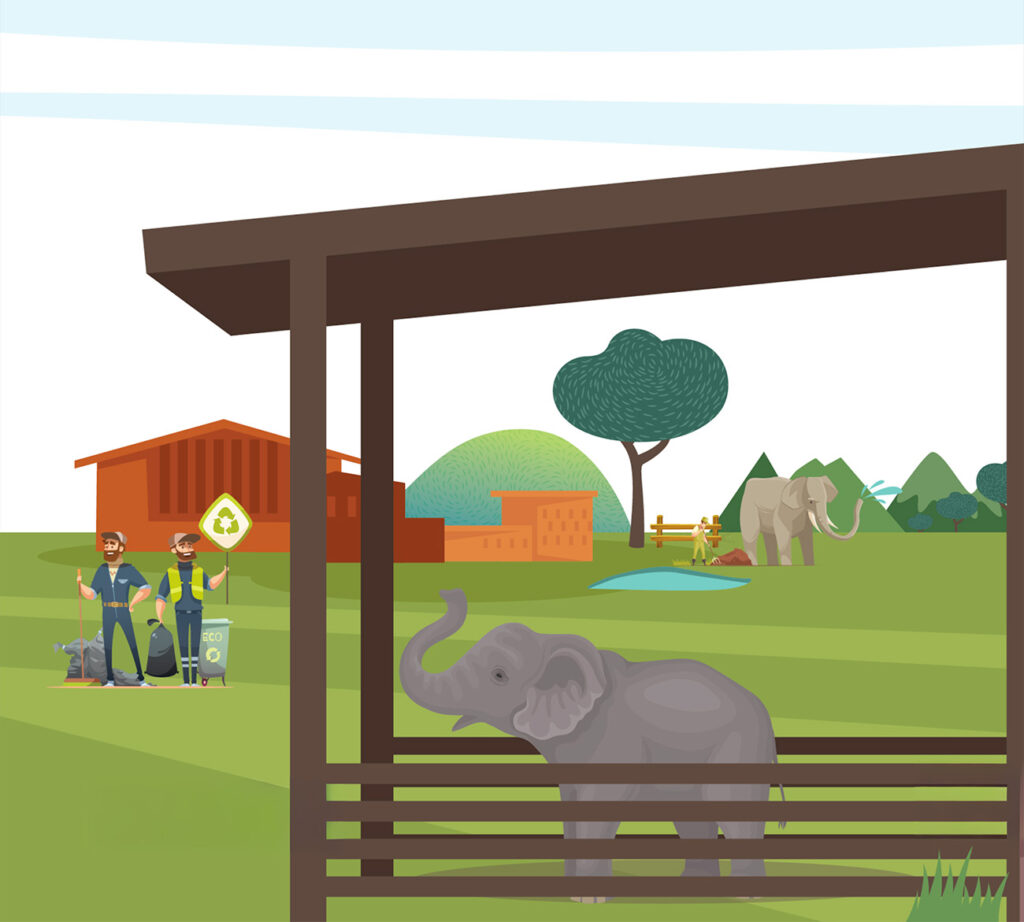
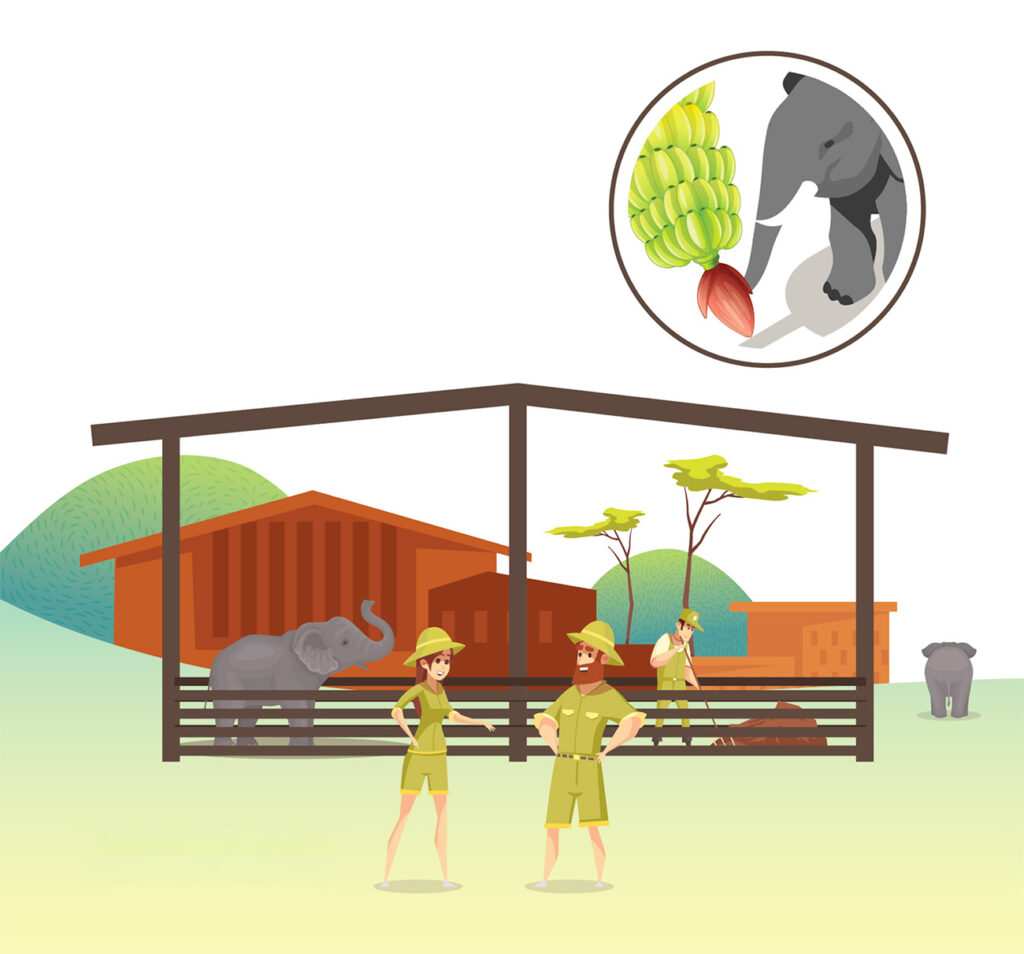
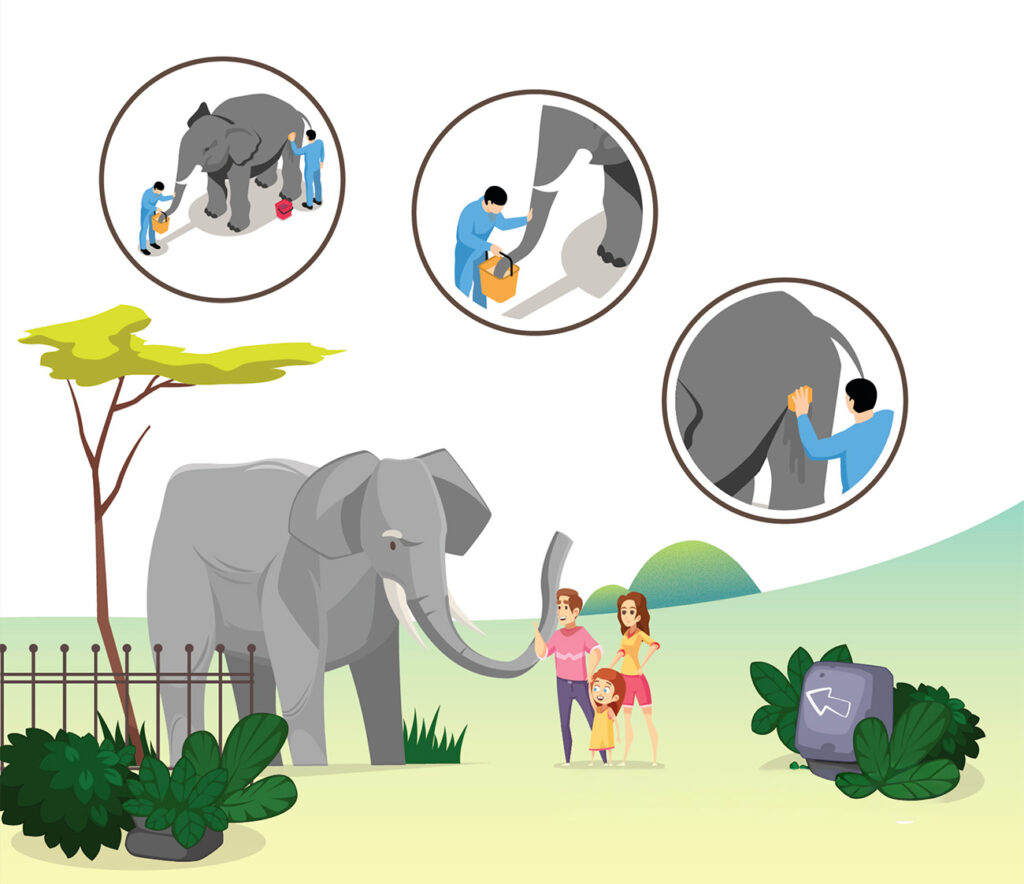
2. Management of Elephant Facility/Camp
2.1 Manual for Elephant Facility/Camp Management
- Manual for elephant facility/camp management shall be made available to provide details of main operations.
- Care and managements for pregnant elephant, elephant after parturition, calf, teenager, adult elephant, geriatric elephant and disabled elephant.
- Calf separation and training
- Breeding management
- Management and control of musth and aggressive behaviours
- Food and water management
- Cleaning of elephant holding area, resting area and equipment
- Elephant health management
- Management of sick and dead elephants
- Animal welfare management
- Environmental management
- Management of elephant services and shows
2.2 Feed and Water Management
- Elephants shall be fed with good quality and safe food that suit to elephant requirements. Food shall comply with the Animal Feed Quality Control Act, B.E. 2558 (2015).
- A separated area for food storage shall be provided. Food shall be properly stored to prevent deterioration and contamination.
- Each elephant shall be able to get access to sufficient food and water suiting their needs. Varieties of food shall also be provided, e.g. forage, fruits and supplements.
2.3 Housing, Tools and Equipment Management
- Elephant houses, surrounding areas and tools and equipment shall be regularly cleaned.
- Elephant houses and tools and equipment shall be maintained in a good condition and to be safe for elephants and personnel.
2.4 Elephant’s Origin Management
- Each domesticated elephant shall have an identification document issued by the competent authority, such as the registration certificate or the stable offspring record.
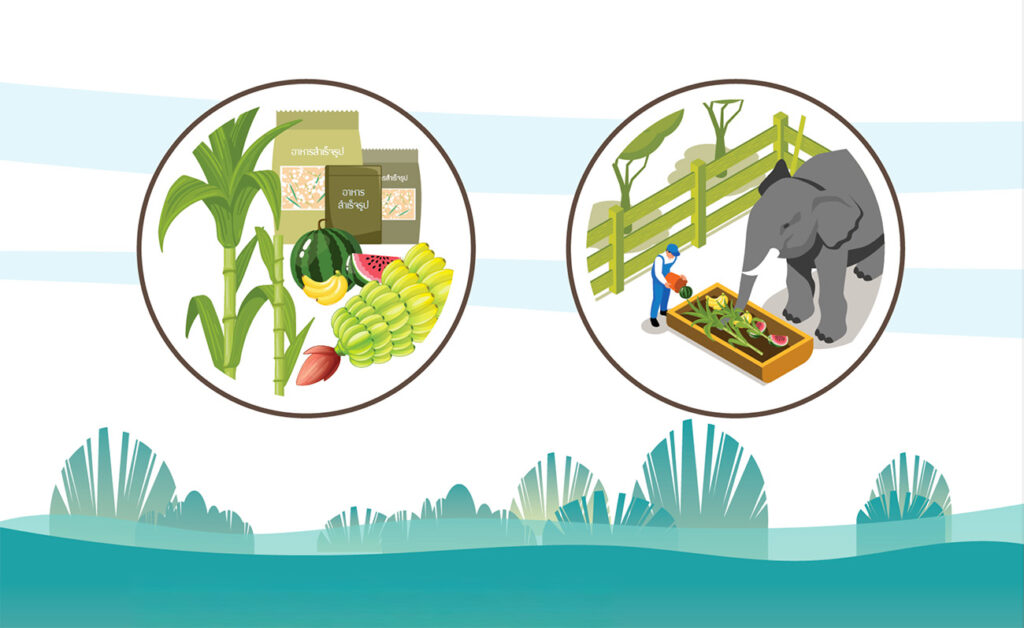
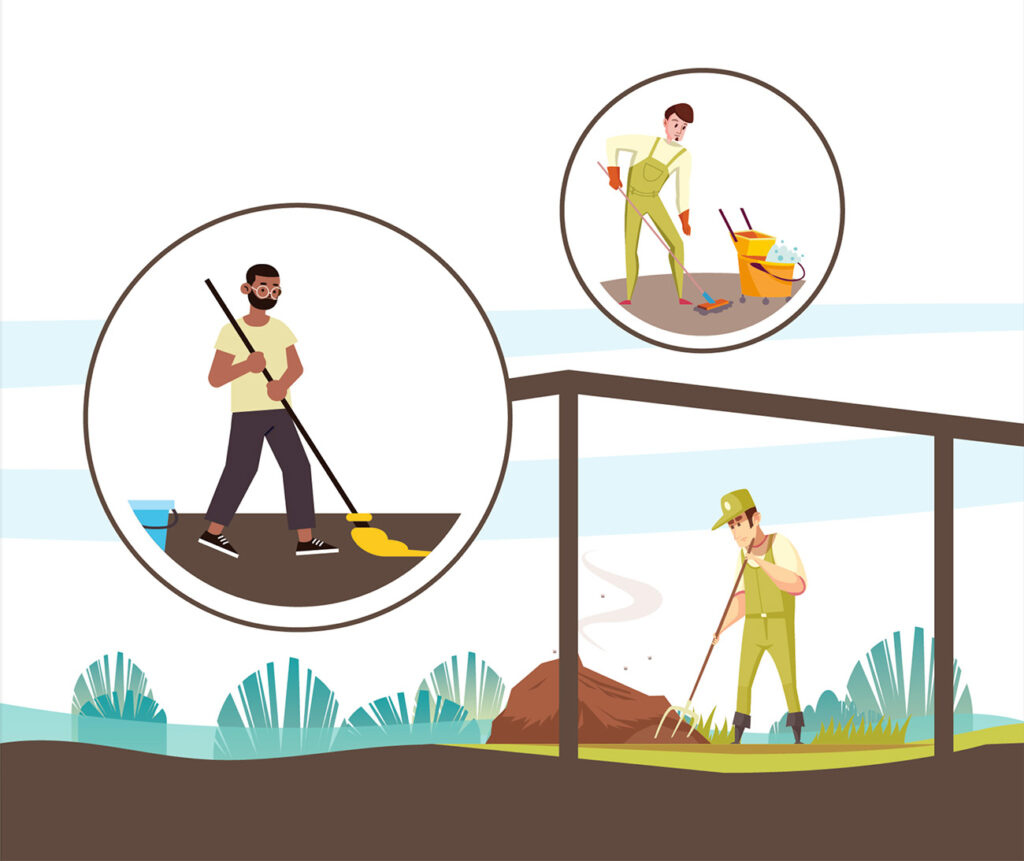
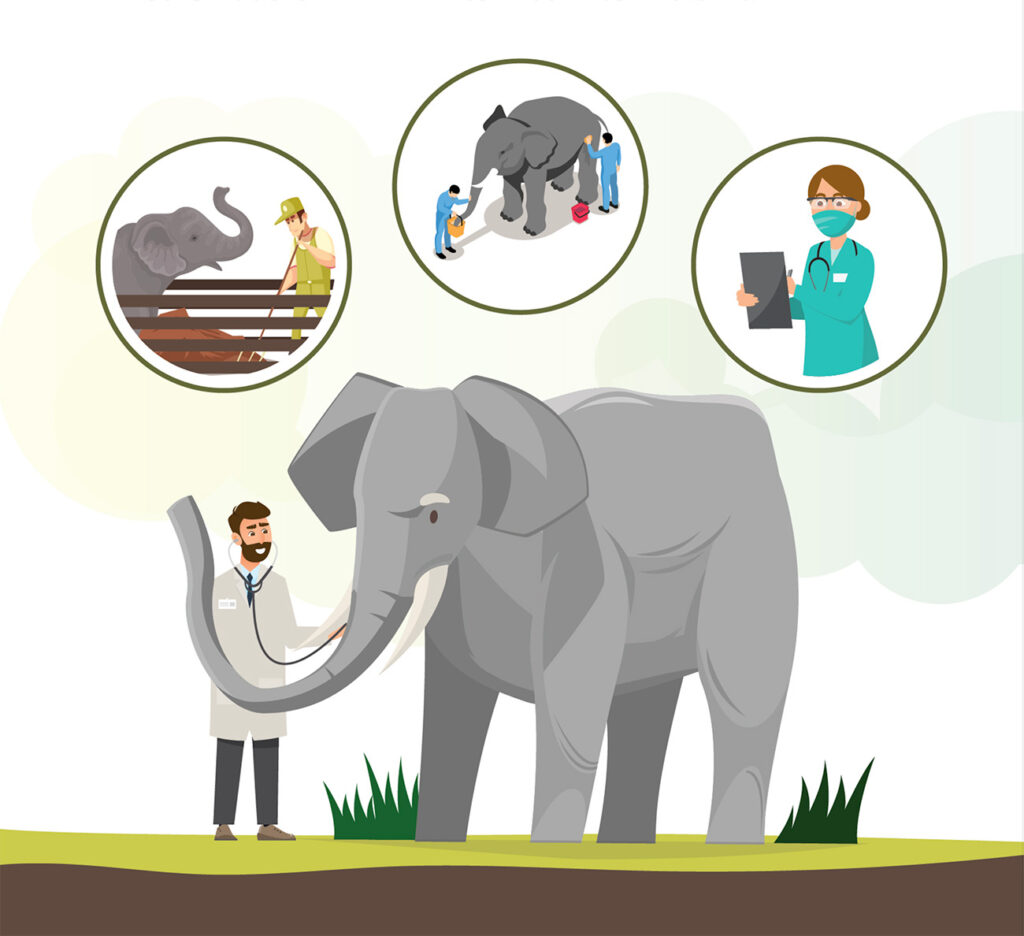
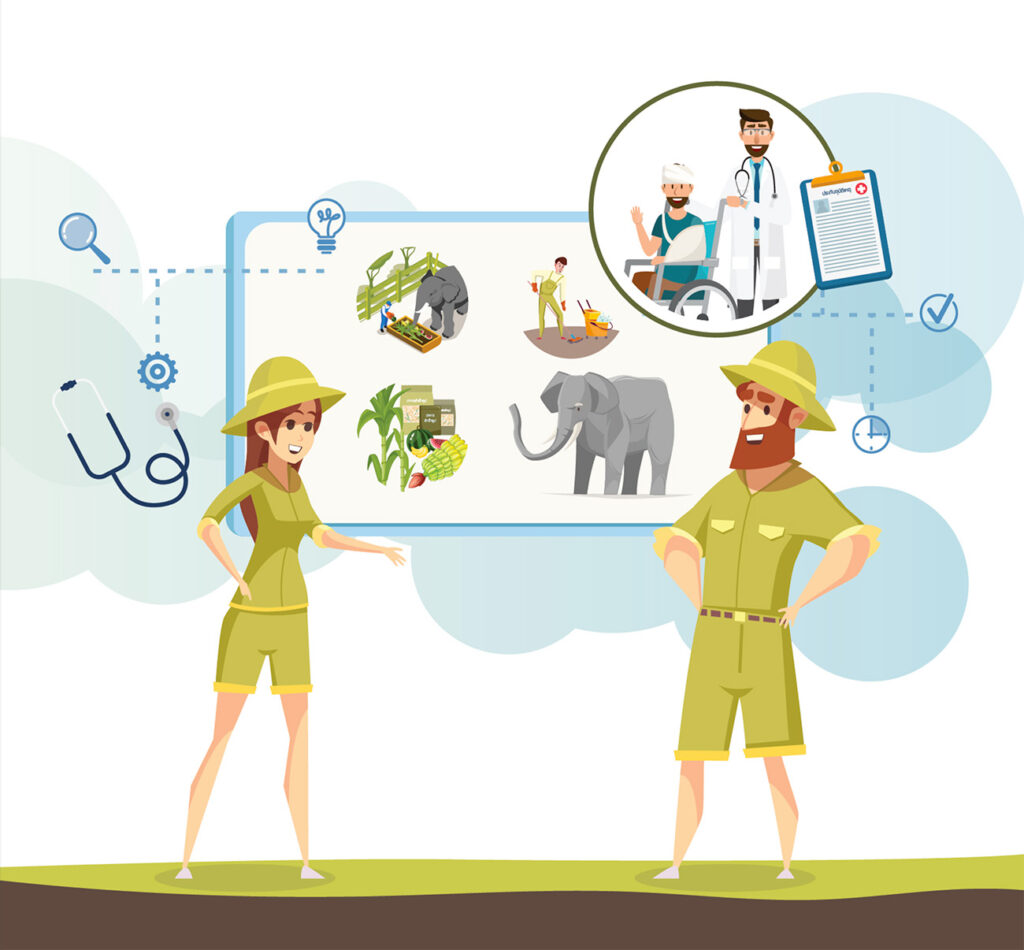
3. Personnel
- The duty and responsibility of personnel shall be clearly defined taking into consideration number of elephants and types of facilities.
- Elephant health care shall be under supervision of a veterinarian.
- Mahouts shall have knowledge, receive trainings or practices in elephant raising and restraint, understand elephants’ behaviours, and take responsibility of food and water management as well as elephant housing to ensure that elephant raising and management will be done properly. They shall also have skills in providing services and assistance to visitors.
- Other personnel in charge of services, e.g. receptionist, customer service staff and security guard, shall have general knowledge on elephants and skills in providing services and assistance to visitors.
- All personnel in the elephant facility/camp shall have good hygiene and annual health check-up, especially zoonotic diseases.
- An elephant bullhook to ensure mahout’s safety and insurance coverage shall be provided.
4. Elephant Health
4.1 Disease Prevention and Control
- Inspection of elephant being and health shall be carried out daily. Abnormalities shall be reported to the responsible person or a veterinarian shall be consulted to subsequently take immediate corrective action.
- Elephant annual health check shall be carried out.
- Disease prevention and control programmes shall be in place, e.g. vaccination, proper control of endoparasites and ectoparasites, under supervision of the veterinarian or a person assigned by the veterinarian.
- Disease surveillance and preventive measures of tuberculosis shall be made available.
- Pest control measures shall be in place.
- New elephants introduced to the facility/camp shall be quarantined. Sick elephants shall be separated from the healthy ones.
- In the occurrences or suspicion of a disease outbreak, actions shall be taken in accordance with the Animal Epidemics Act B.E. 2558 (2015) and recommendations of the Department of Livestock Development.
- Each elephant shall have an individual booklet
4.2 Treatment of Diseases
- Treatment of animal diseases shall be under the supervision of a licensed veterinarian in accordance with the Veterinary Profession Act.
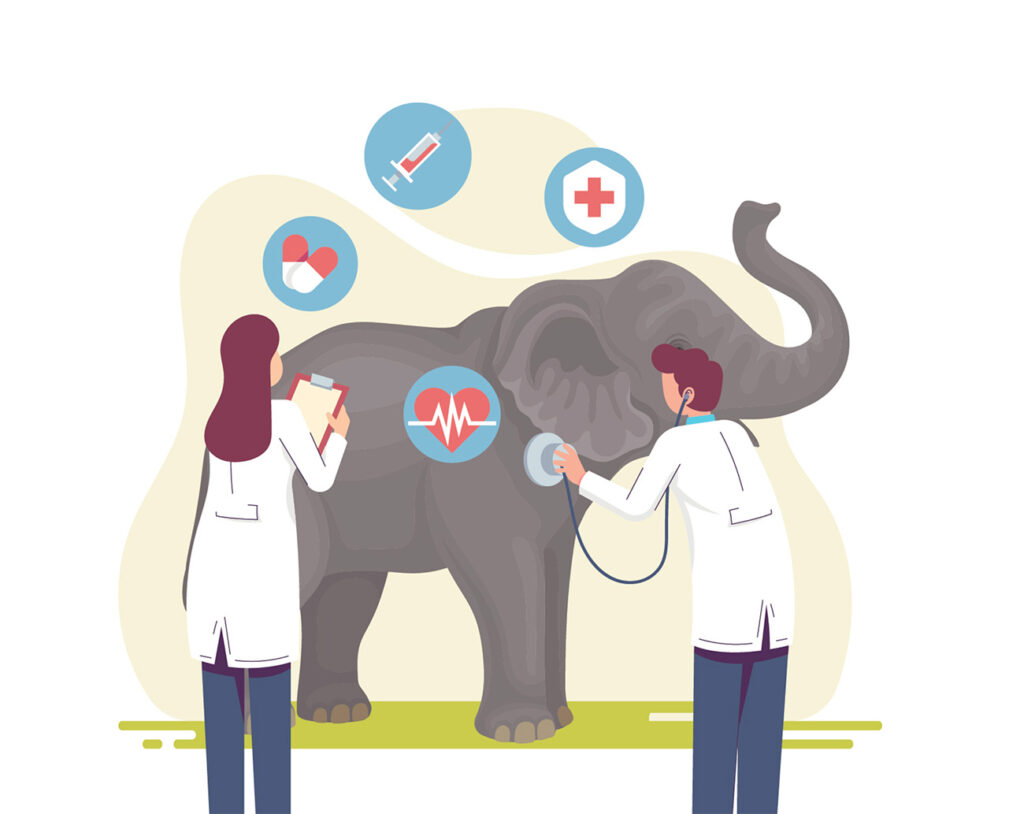
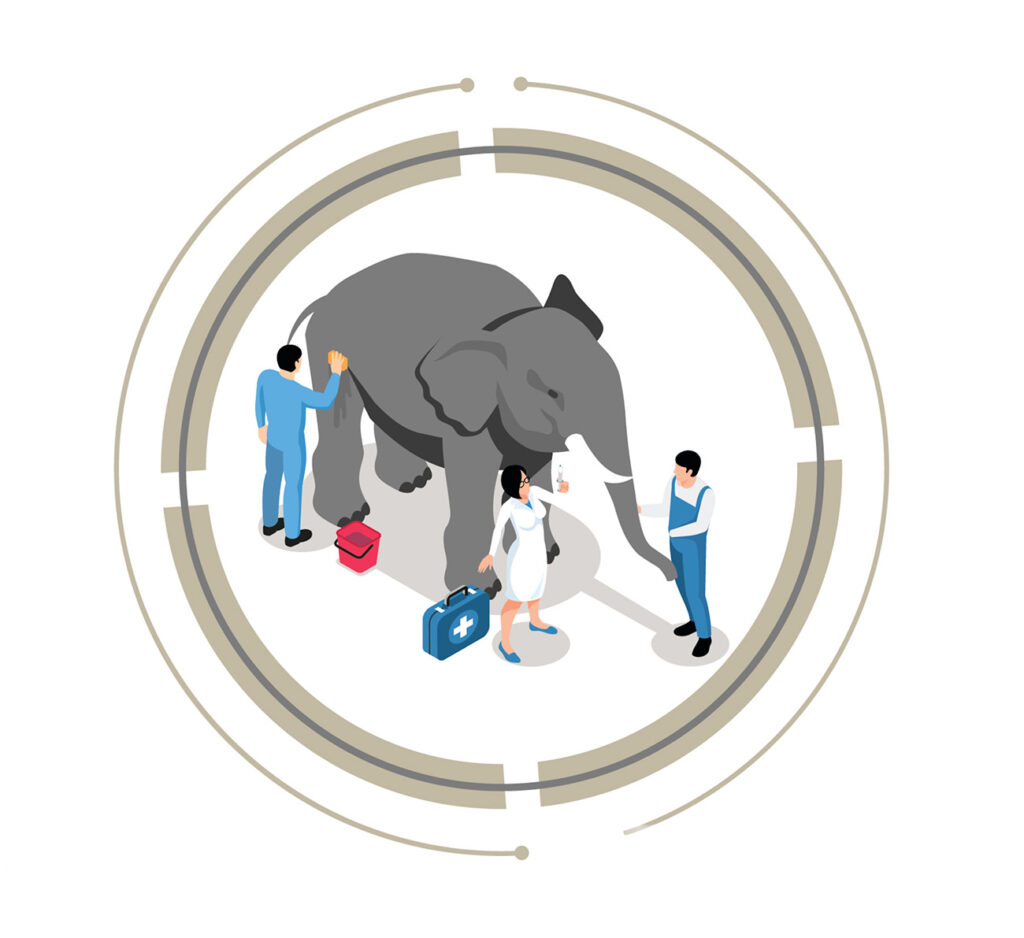
5. Animal Welfare
- Elephant care and handling shall meet the principles of five freedoms for animal welfare, as follows:
- Freedom from hunger and thirst
- Freedom from discomfort
- Freedom from pain, injury or disease
- Freedom from fear and distress
- Freedom to express normal behaviour
- Elephant care and handling shall comply with the Cruelty Prevention and Welfare of Animals Act, B.E. 2557 (2014).
6. Environment
- Dead elephants, garbage, waste and effluent shall be disposed of by appropriate methods as stipulated by the relevant laws.
- Measures for dung management shall be in place to mitigate environmental impact.
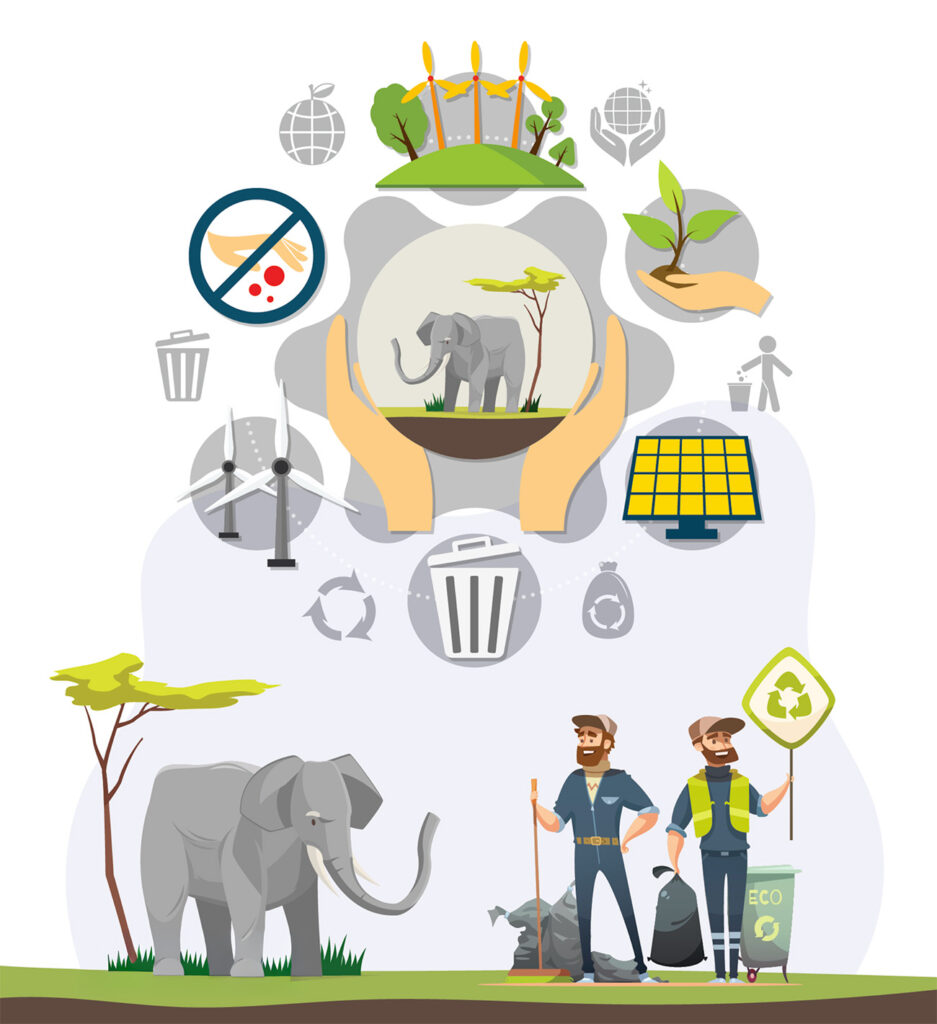
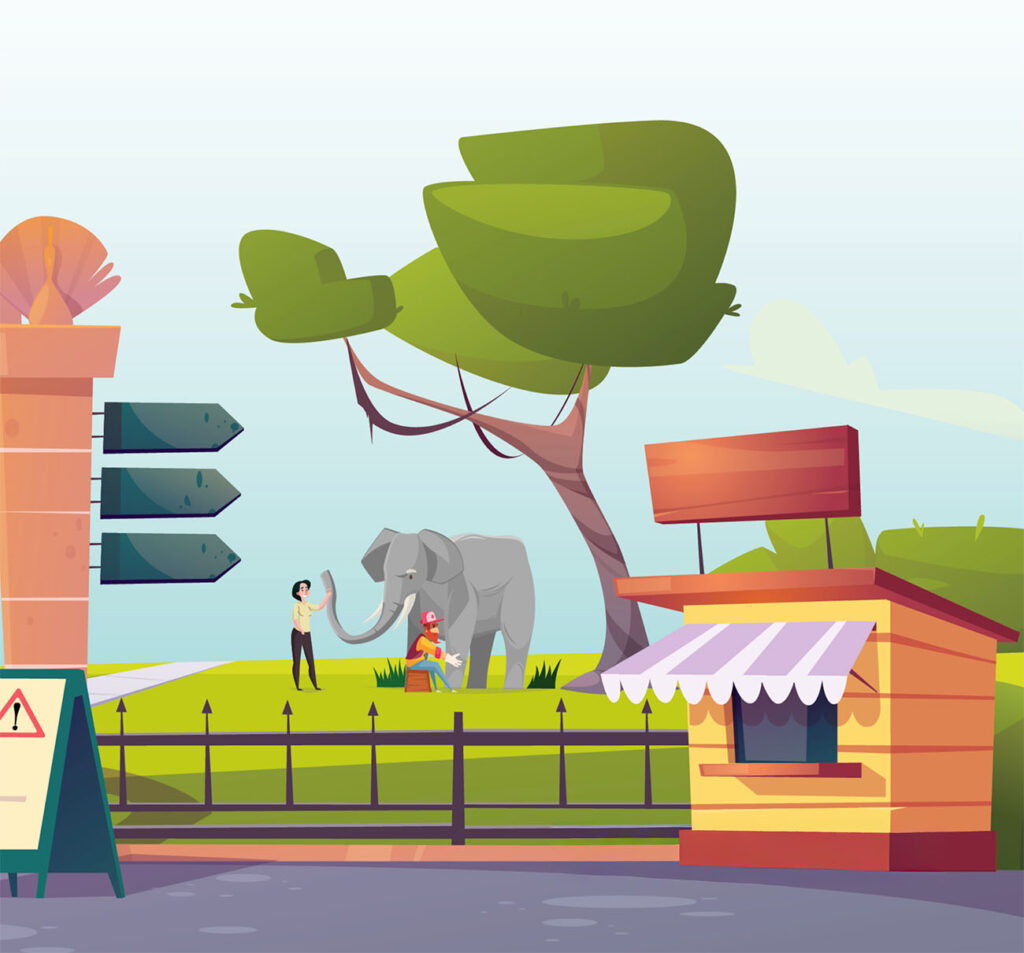
7. Safety Management
- Personnel, signs and documents shall be made available to provide instructions on safe approach to elephants, feeding, riding and close interactions with elephants.
- Mahouts shall inspect elephant behaviours prior to providing each service to visitors.
- Safety management procedures shall be in place.
- Fences or barriers shall be in place between visitors and elephants during shows or feeding.
- Contingency plan shall be made available and emergency preparedness shall be practised.
- Loading and unloading points for elephant riding shall be firmly constructed, durable and secured.
8. Data Recording
- Important information to be recorded shall be on the followings:
- Personnel, trainings and practice, and annual health check-up
- Sources of food and water
- The application of chemicals, disinfectants or hazardous substances for livestock
- Use of veterinary drugs and food supplements
- Elephant movement documents
- Records shall be kept for at least 3 years.
